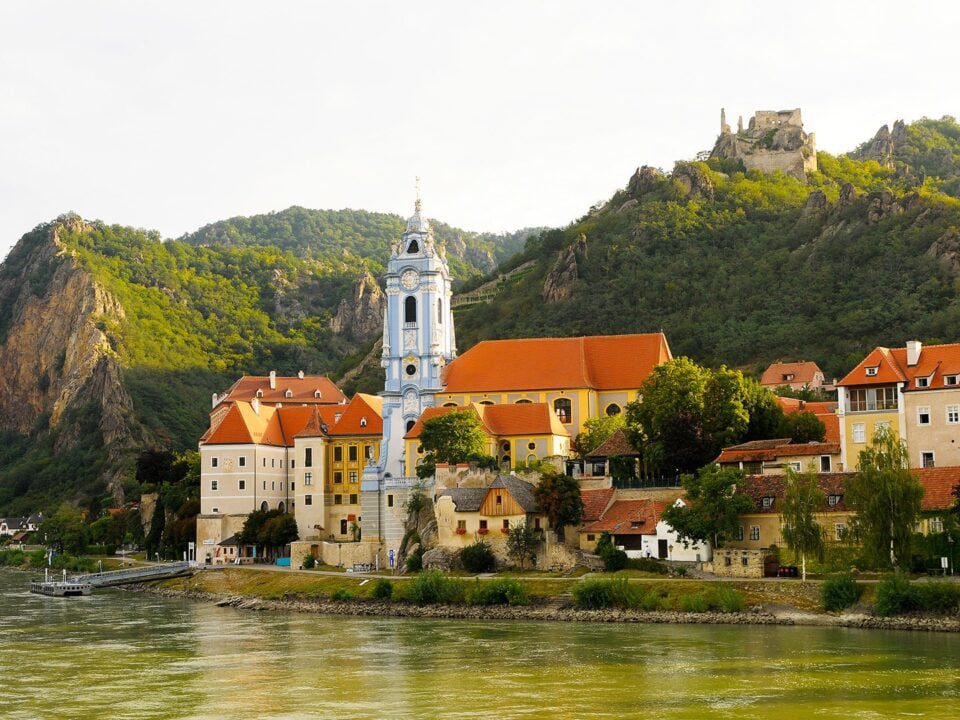If you are planning a trip to the capital of Austria, you will have a unique opportunity not only to get acquainted with its amazing sights but also to see the cultural and historical monuments of the Viennese surroundings and other European cities. Many unforgettable trips are organized throughout the tourist season. Here, we will tell you where you can go from Vienna for a day trip on your own.
Franzensburg Castle
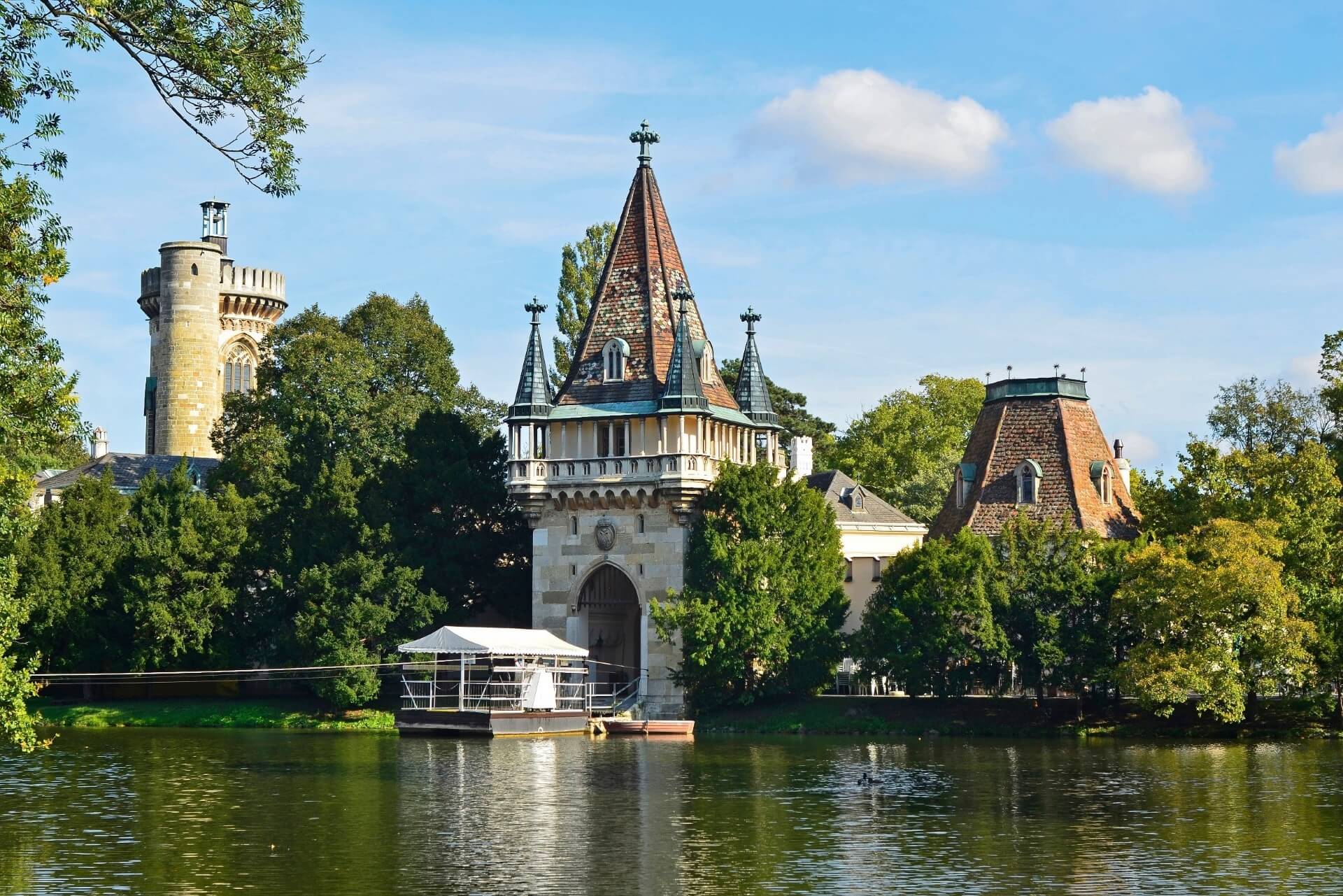
Those who watched the exciting romantic film about the beloved Austrian Empress Sisi (the wife of Franz) remember the episodes of her walk in the beautiful old park of Laxenburg. In the 13th century, the park area served as a royal hunting ground, and in the 19th century, the romantic emperor ordered the construction of an extraordinary castle here as a tribute to the knightly past of his ancestors. During the acquaintance with the neo-Gothic architectural masterpiece, you will hear the story of the castle’s construction, a tale of the romantic love of Sisi and Franz, and see many interesting things.
Surrounded by truly magnificent floral landscapes, the building resembling a precious casket stands tall: bright stained glass windows, expressive spires and turrets, numerous marble sculptures look fantastic. Inside the castle is a rich collection of household items and applied medieval art. In the park, you cannot help but admire the authentic elegant gazebos, a picturesque islet, and a lake with swans and landscape pictures.
Kreuzenstein Castle
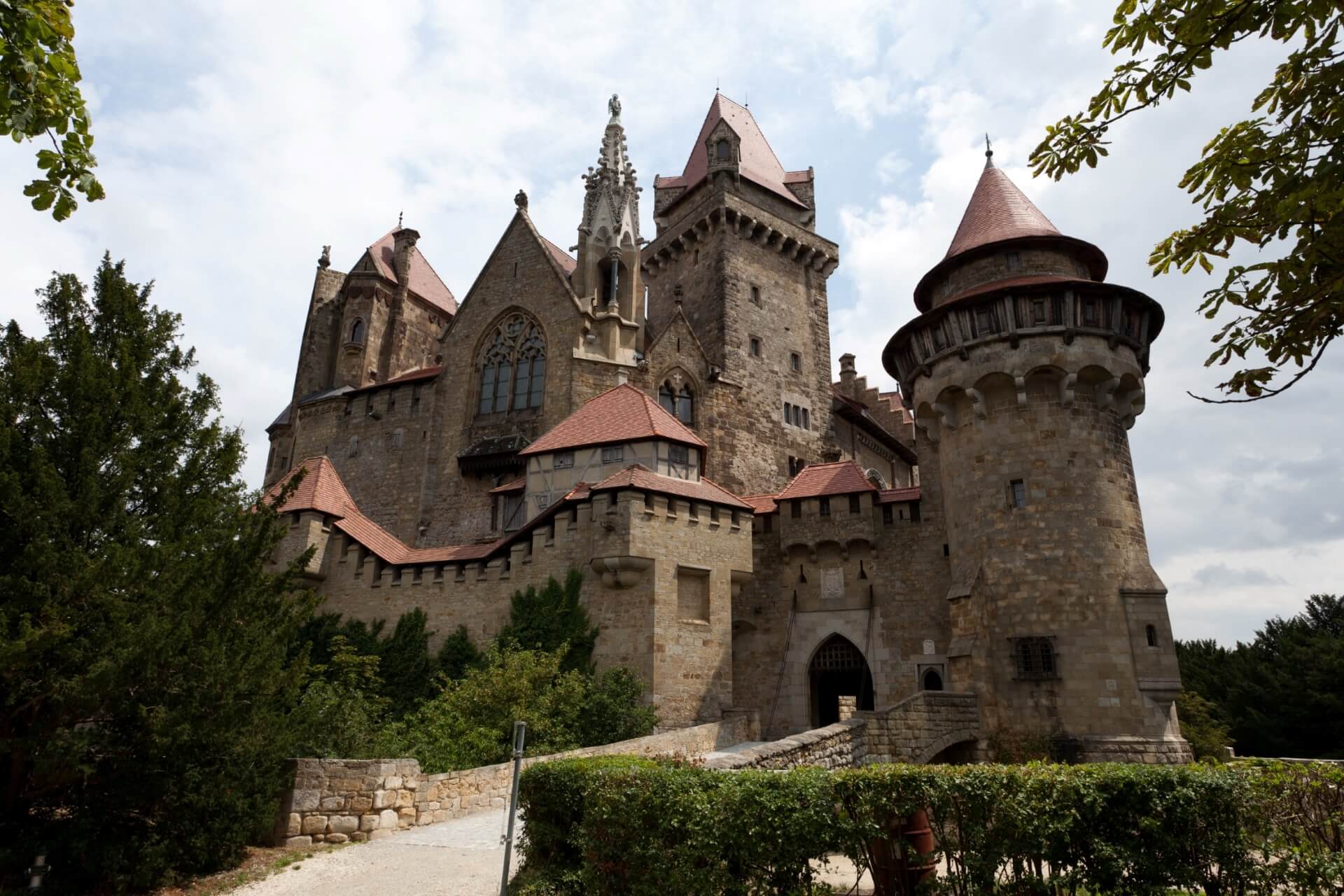
Viewers of the extravagant Hollywood thriller “Season of the Witch” must remember the ancient knight’s castle where the main episodes of the film were shot. Its Gothic turrets, crenellated walls, and drawbridge are striking features of medieval fortresses that suggest the grandeur of the structure. However, the castle’s history (13th century) reveals that it was blown up by Swedish invaders in the 17th century and restored in the 19th century by the Counts of Wilczek, who understood the historical significance of the fortress.
A journey through the “labyrinths” of Kreuzenstein is an exciting plunge into the atmosphere of medieval life. Everything here is interesting: the massive walls, the arrangement of the inner courtyard, and the interiors. The impressive exhibit with a large collection of antique weapons, the hall of knightly armor and symbols, and the huge wooden kitchen table, which used to be a bridge over the Salzach river, are all fascinating. During the tour, the guide shares many interesting facts about the castle’s history, including legends about its ghosts.
Klosterneuburg
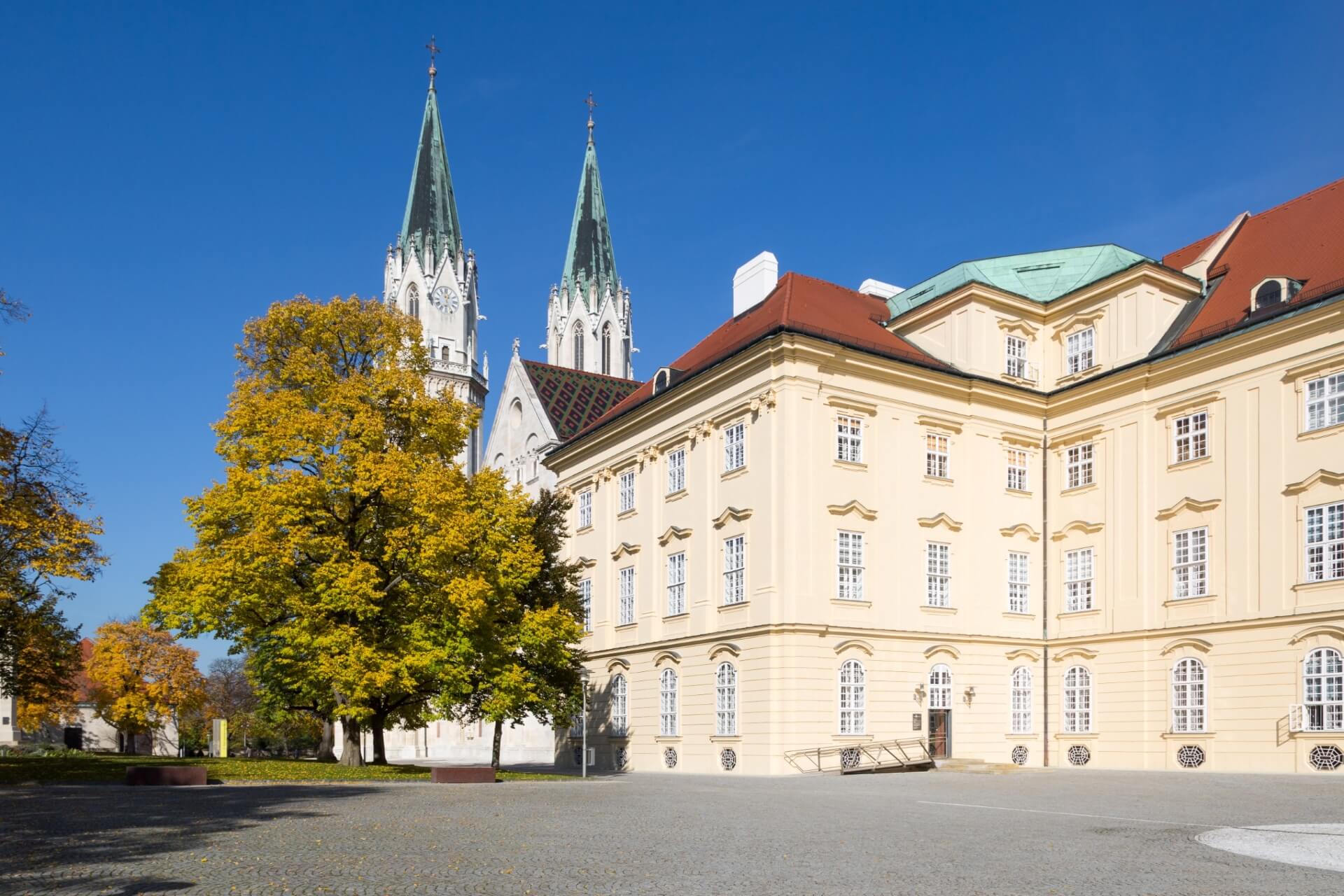
A trip to the incredibly beautiful ancient town (900 years old) in the Lower Austria federal state – Klosterneuburg – will undoubtedly be a success for tourists. Its historic center is a kind of open-air medieval museum, where every house and building is a beautiful architectural monument. The central square with the Plague Column, statues of saints, and great figures of the past are genuine witnesses to the glorious and tragic past.
The main attraction is the stunning Augustinian monastery. At the entrance is the Church of St. Mary, captivating with its Gothic beauty. The intricately carved towers with pointed domes, wall ornaments, and elegant vaults make the Romanesque basilica a masterpiece of religious architecture.
Inside the church is a unique organ (a valuable rarity from 1642). Flower “carpets,” fountains, and monuments adorn the monastery’s territory. In its “treasury” rooms, magnificent examples of jewelry are displayed, including two state crowns, exclusive royal garments adorned with precious stones and gold. You can see many interesting things in the still-functioning abbey.
Grafenegg Castle

In Lower Austria, another true marvel of architecture – Grafenegg Castle – is located. It stands among a picturesque pompous park, seemingly hiding under the shade of spreading trees, but when it reveals itself in all its glory, it makes you stand in awe of the majestic beauty of its facades. Words are hard to describe this architectural and artistic masterpiece; seeing it is an undeniable fortune! Built in the 14th century, the palace complex embodies architectural elements from past centuries – from late Gothic, Biedermeier, Renaissance, and neo-Gothic.
The current charmingly romantic appearance was given to the palace by the reconstruction of 1840-72, carried out by the new owners, the Counts of Breuner. Coffered wooden ceilings, carved panels of valuable wood, intricately designed fireplaces, artistic wall paintings, elegant statues, paintings, portraits, and rare furniture create extraordinary splendor in the interiors. Everything here is worthy of admiration, and visiting the castle is an aesthetic pleasure.
Liechtenstein Castle
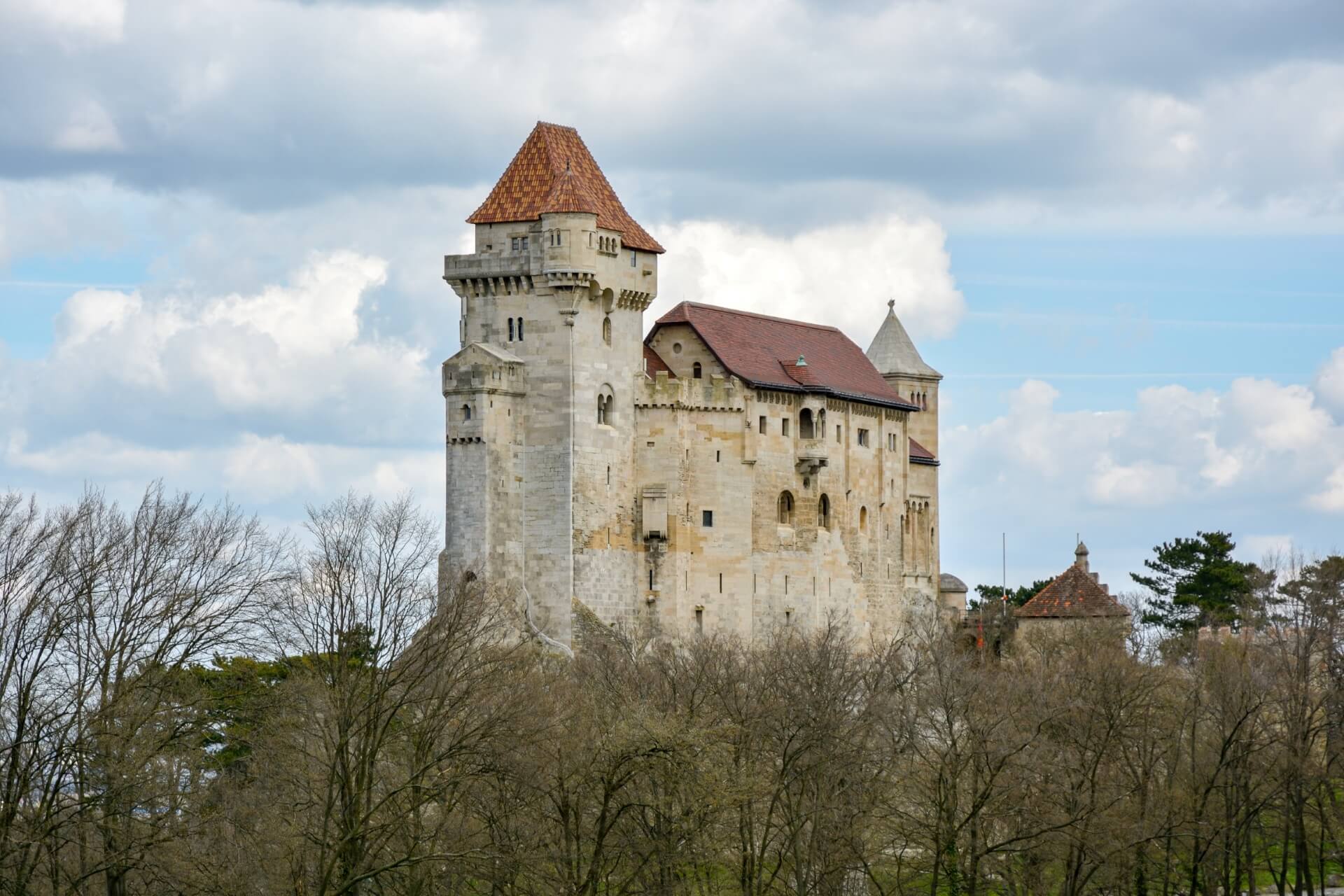
For those who previously did not know about the existence of the tiny state of Liechtenstein, a trip here will be particularly interesting. The principality-castle of Liechtenstein is located in the small town of Maria Enzersdorf, on the outskirts of the famous Vienna Woods. The history of the ancient castle, built by the progenitor of the princely dynasty, began in 1135.
Throughout the ages, the structure has repeatedly faced destruction and decline, but by the beginning of the 19th century, the ancestral castle was thoroughly recreated and restored again after World War II, which caused significant damage. An excursion into the unique dwarf state is not only a tour of a valuable monument of early architecture but also an acquaintance with the amazing history of the Liechtenstein dynasty, their role in the formation of Austria, and the sad and joyful events of the noble family.
The road to the rarity lies among irresistible natural beauties, and the castle itself proudly rises on a rocky hill. Inside, only accessible with a group and a guide, visitors will experience strong impressions from the ancient interiors restored according to authentic sketches and drawings. The revived 12th-century era, expanding the time framework, visibly appears before the astonished eyes of visitors, stirring their souls and hearts.
Grinzing Village
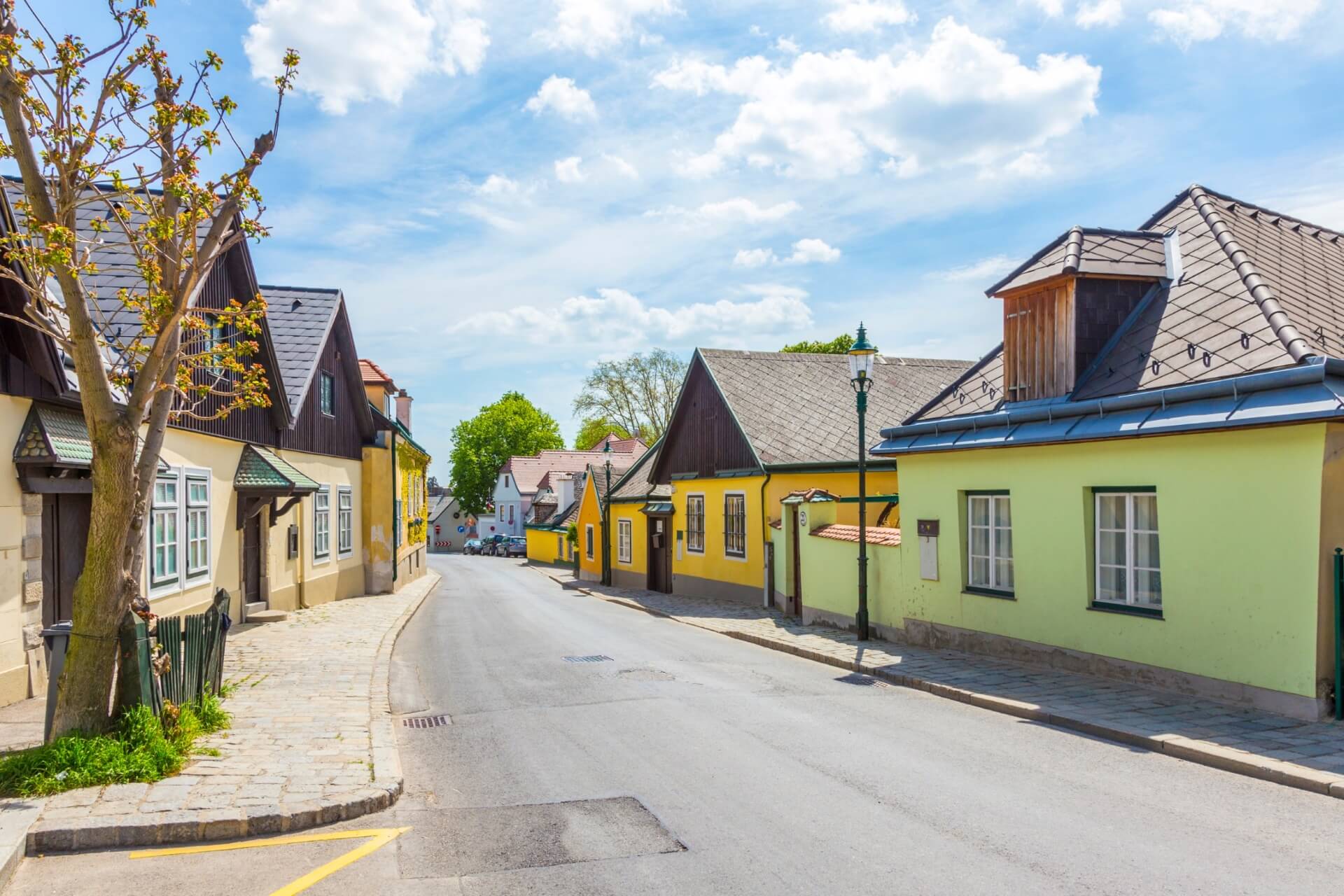
After the majestic beauty of Vienna’s buildings, a journey to the old village of Grinzing, essentially a small, cozy town, will immerse you in the patriarchal atmosphere of rural life. Since the 17th century, Grinzing was an independent settlement located near the Vienna Woods, later becoming part of Vienna while retaining its medieval authenticity.
Here, mainly viticulturists and winemakers live, producing excellent wines famous not only in Austria but beyond its borders. When you find yourself on the narrow, clean streets of the town, you immediately feel a charming, patriarchal charm “living” in the lovely “gingerbread-toy” houses adorned with flower pots, in the old arches entwined with grapevines and ivy, in the wrought iron lanterns, cozy courtyards, and the cobblestone sidewalks.
The main attraction of Grinzing is the magnificent late Gothic church in the town’s center. To conclude an unforgettable walk, you can relax in one of the many heurigers (local restaurant), sitting at a wooden table with a glass of delicious wine and an appetizing snack, as it was in the times of Schubert, Beethoven, Gogol, Mahler, and others.
Wachau Valley
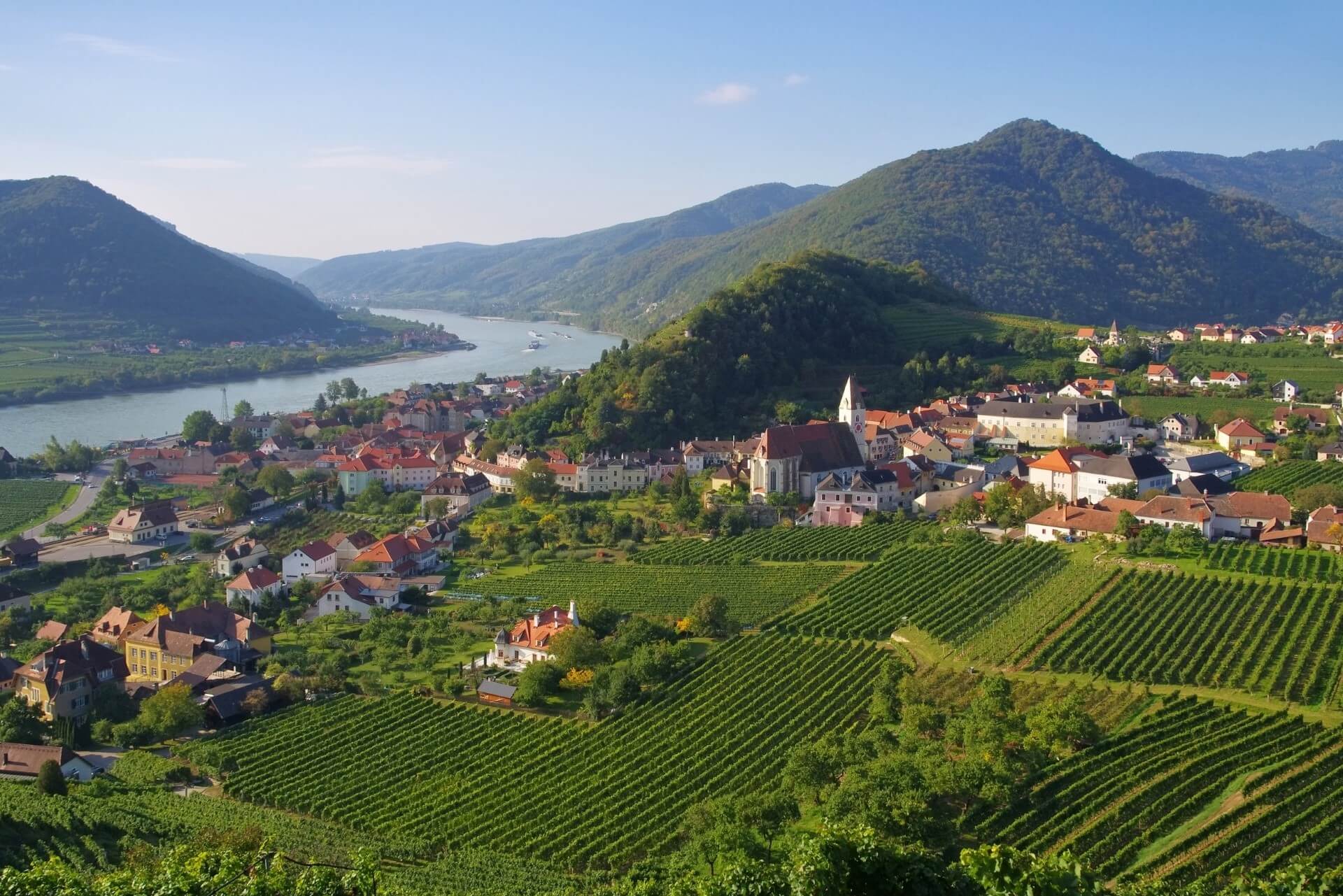
Not visiting the extraordinarily picturesque Danube Wachau Valley means depriving yourself of the pleasure of seeing truly unearthly beauty in diverse landscapes, against which cultural and historical monuments are situated. The results of archaeological excavations in the vicinity of the cities of Melk and Krems prove that humans settled in these blessed places in the Neolithic era. The valley’s inhabitants grow grapes and fruits.
The mesmerizing sight of the majestic Danube, smoothly carrying its waters among wooded banks, is worthy of attention. You cannot help but admire the green hills of Dunkelsteinerwald and the high rocks soaring upwards, the orderly rows of vineyards, and the walls of the ancient monasteries of Melk and Göttweig. A visit to Dürnstein Castle will be an impressive event of the trip, and overall, the excursion to the valley will show how carefully Austrians treat nature and honor the monuments of the past. Wachau has been a UNESCO World Heritage site since 2000.
Vienna Woods
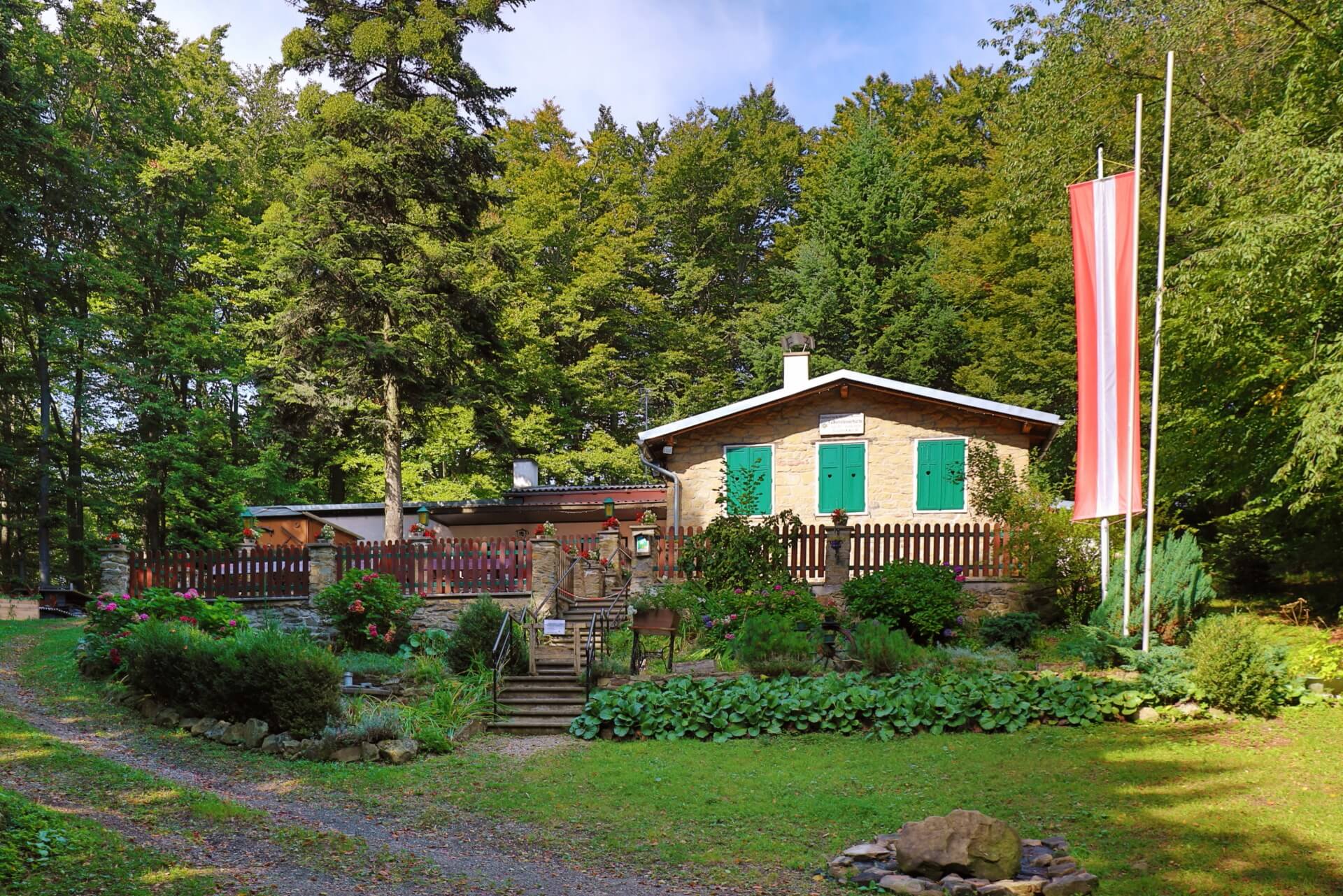
The invaluable treasure of Austria – the oak and beech forests known as the Vienna Woods, immortalized in Strauss’s waltzes, spread around Vienna over an area of 1250 km. The “Green Lungs” of the Austrian capital, formed over millions of years under the influence of geological and climatic factors, have unique flora and fauna. The Vienna Woods were popular even among Celtic tribes, and today, this fairy-tale beautiful “mini-state” is a favorite place of recreation for Viennese and tourists.
To see the main attractions of the Vienna Woods, you should visit them with a guide. Along the way, he will introduce you to interesting historical facts, show you Schubert’s house, the magnificent Liechtenstein Castle, and other sites. A walk along the cozy alleys among the green hills will lead to the ruins of an ancient fortress (11th century) on Leopold’s Hill. From the summit, you can endlessly admire the incredibly beautiful alpine landscapes. A visit to the resort town of Baden will be a bright concluding “chord” of the journey.
Melk Abbey
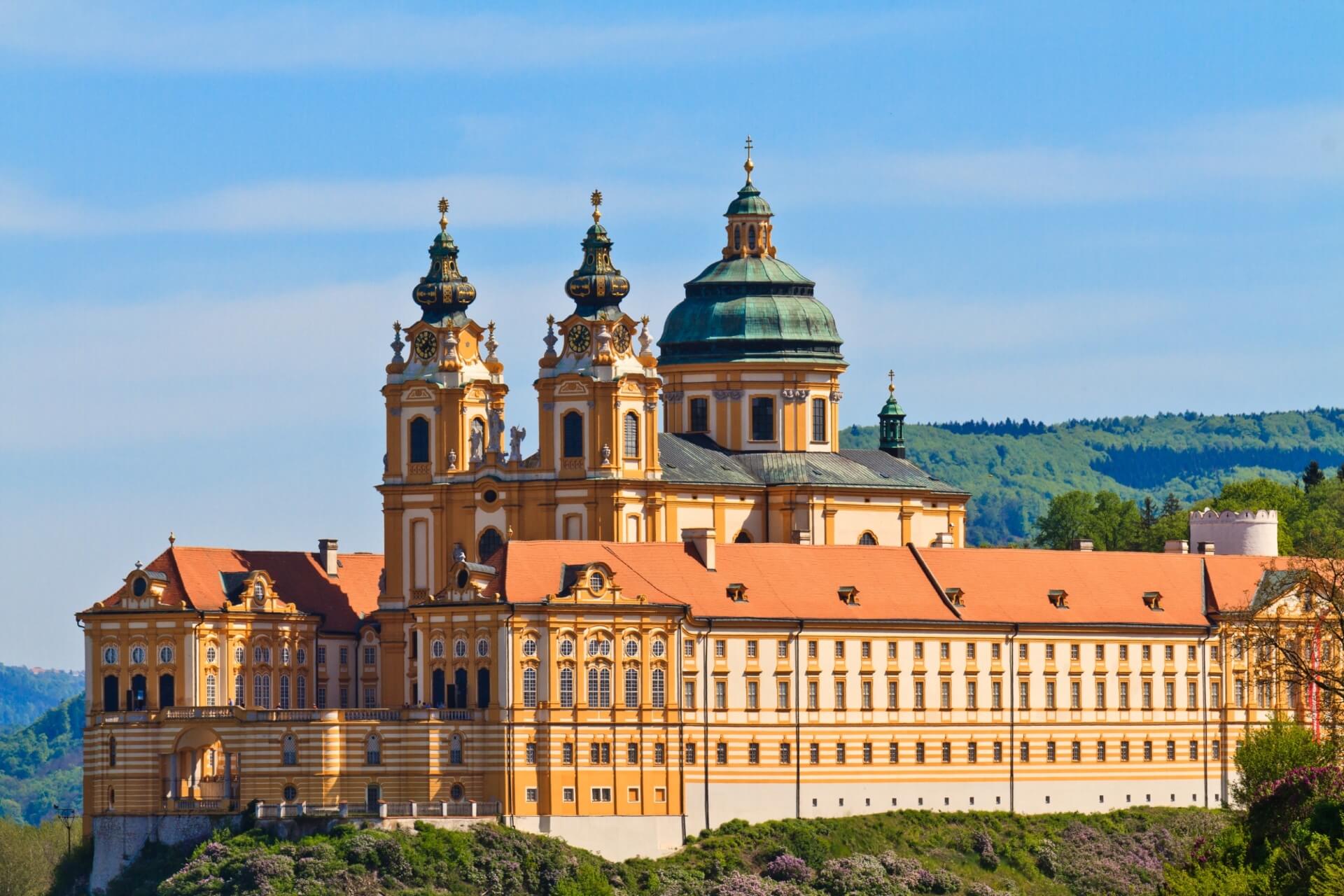
A trip to the small provincial town of Melk, located on the western edge of the Wachau Valley, will acquaint you with its amazing sights and leave the most pleasant impressions. The old buildings of the post office, city church, and bread shop are monuments of medieval architecture that are of great interest. It’s worth visiting the local museums, which showcase extraordinary exhibits, and the source of St. Coloman, whose day is celebrated annually on October 13th.
On Trinity Day, the town celebrates Baroque art festivals. But the most attractive unique object in Melk is the ancient Benedictine monastery. The beautifully decorated entrance walls of the former residence of Margrave Leopold I (1089) greet guests with sculptures of Saints Leopold and Coloman, installed on either side of the entrance. Leopold’s descendants handed over the fortress-residence to Benedictine monks.
The abbey has existed for nine centuries, where monks still live according to the rule of St. Benedict. The sight of the old bastions surrounding the monastery, collections of ancient manuscripts, church regalia, and art objects is impressive. You cannot help but admire the Marble Hall, the imperial staircase, the church of Saints Peter and Paul, and the wonderful park. The monastery library amazes with its decoration, the number of folios, and manuscripts.
Krems
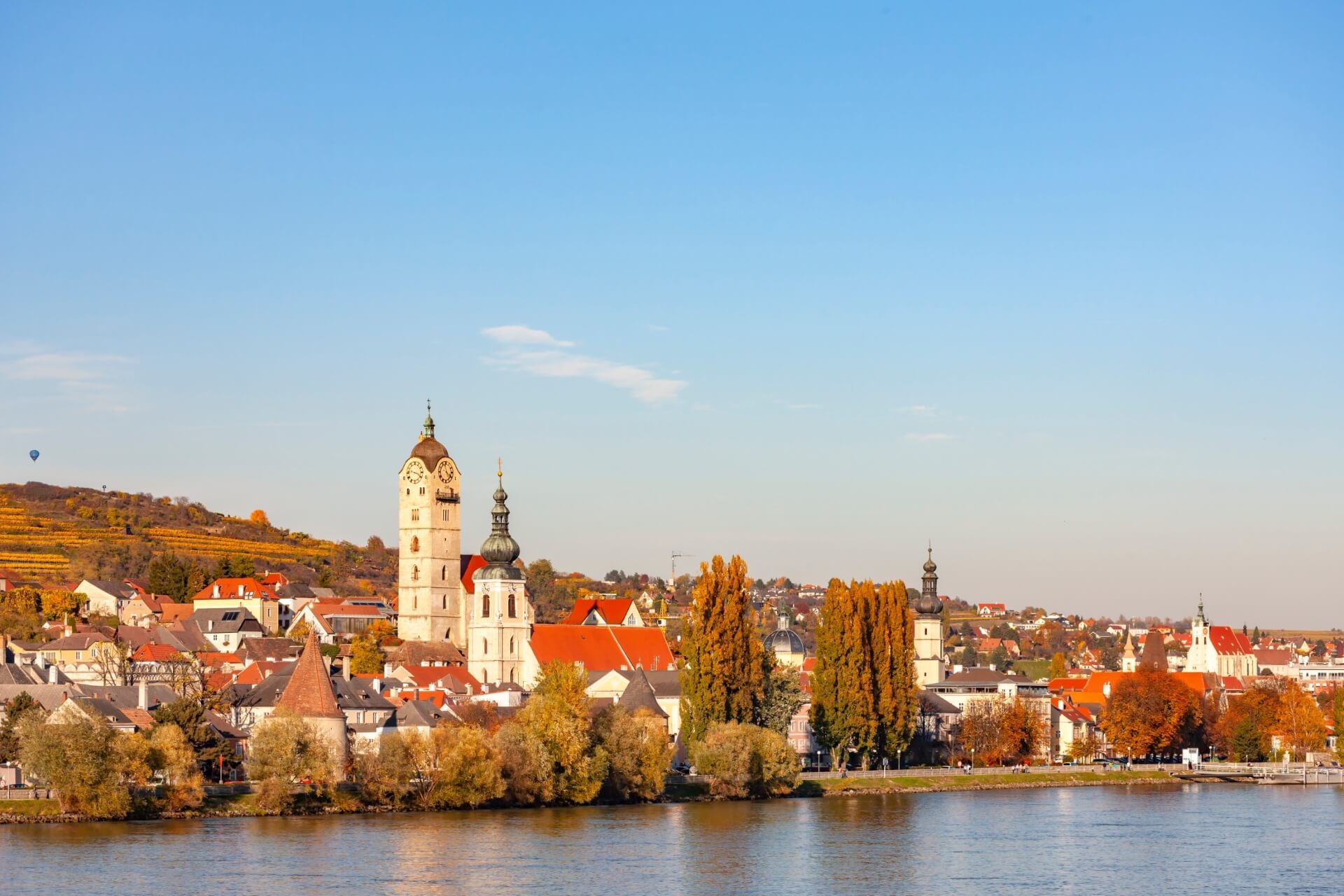
The charming old town of Krems, located at the confluence of the Krems and Danube rivers, was an important trading point in the Middle Ages. It was here that Austrian pfennigs, known as Kremser, were first minted. Surrounded by garden terraces and vineyards, the town captivates with its patriarchal beauty. The unique building of the town is the Piarist Church, built in the 15th century on the site of an old Romanesque temple. The reconstruction of the facades in the 16th century gave them a late Gothic appearance, replicating the exterior of Vienna’s St. Stephen’s Cathedral.
Inside the church, the Baroque decorations and the image of the Virgin Mary by M. Schmidt are impressive. Visiting the parish church of St. Vitus, the first example of the Austrian Baroque era, will be interesting. Climbing the medieval Powder Tower allows you to take in the magnificent view of Lower Austria. The old Town Hall and Gozzoburg Palace are remarkable Renaissance architectural monuments that will not go unnoticed.
Bratislava
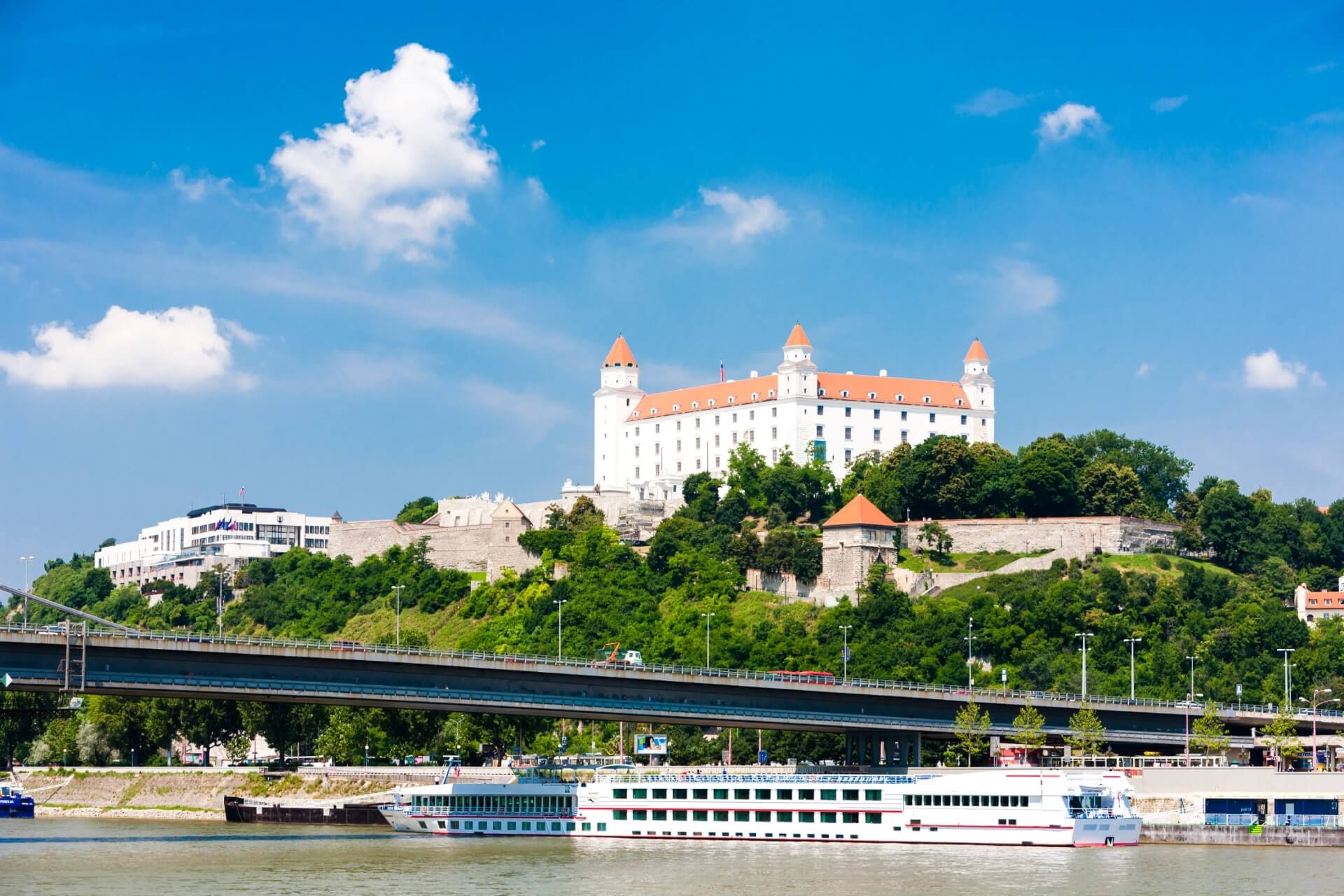
The old Czech city, which became the capital of Slovakia in the 21st century, has acquired the status of a popular tourist destination. In Bratislava, the beauty of the Danube closely intertwine with past epochs, captured in medieval castles and palaces, and the present day – in the modern attributes of a young European capital. The Danube, dividing the city into two parts, makes it very picturesque. The abundance of historical and cultural monuments turns the city into an open-air museum with much to see.
The tour of the city begins with its “heart” – Bratislava Castle, from which Bratislava originated. This monumental fortress castle from the 10th century, located on a Danube cliff, has been repeatedly rebuilt and restored anew in 1968. From its observation decks, stunning views of the Danube valley open up. The oldest structure – St. Michael’s Gate – was an important fortification of the medieval fortress.
At the confluence of the Danube and Morava rivers stands an equally unique historical monument – Devin Castle, which significant trade routes passed by. The amazing modern structure – the New Bridge – surprises with its unusual suspension design, having only one support despite its impressive length.
Puchberg am Schneeberg

A trip to the small resort town, whose name combines the names of two mountains, is known as a fairground commune – a place for various fairs. But this fact is not the primary reason for choosing the trip. It is an opportunity to see a typical alpine village and immerse yourself in the irresistible provincial beauty of charming landscapes, local household, and cultural traditions.
A walk along the clean streets will allow you to admire the small houses with beautiful neat facades covered with ivy. Among the street buildings, you will find bakeries with amazingly tasty bread. In the center of the commune is a real paradise – a large pond surrounded by green lawns, shady plane trees, oaks, and hornbeams.
Here you can sit on the shore and watch black swans and ducks, see trout in the clear water. The local tourist train “Salamandra” will take you to the top of the mountain, from where you can see stunning surroundings, where you can visit a small chapel and pray before the sculptural image of the Virgin Mary. The beauty of the alpine nature will remain in your imagination for a long time.
Baden
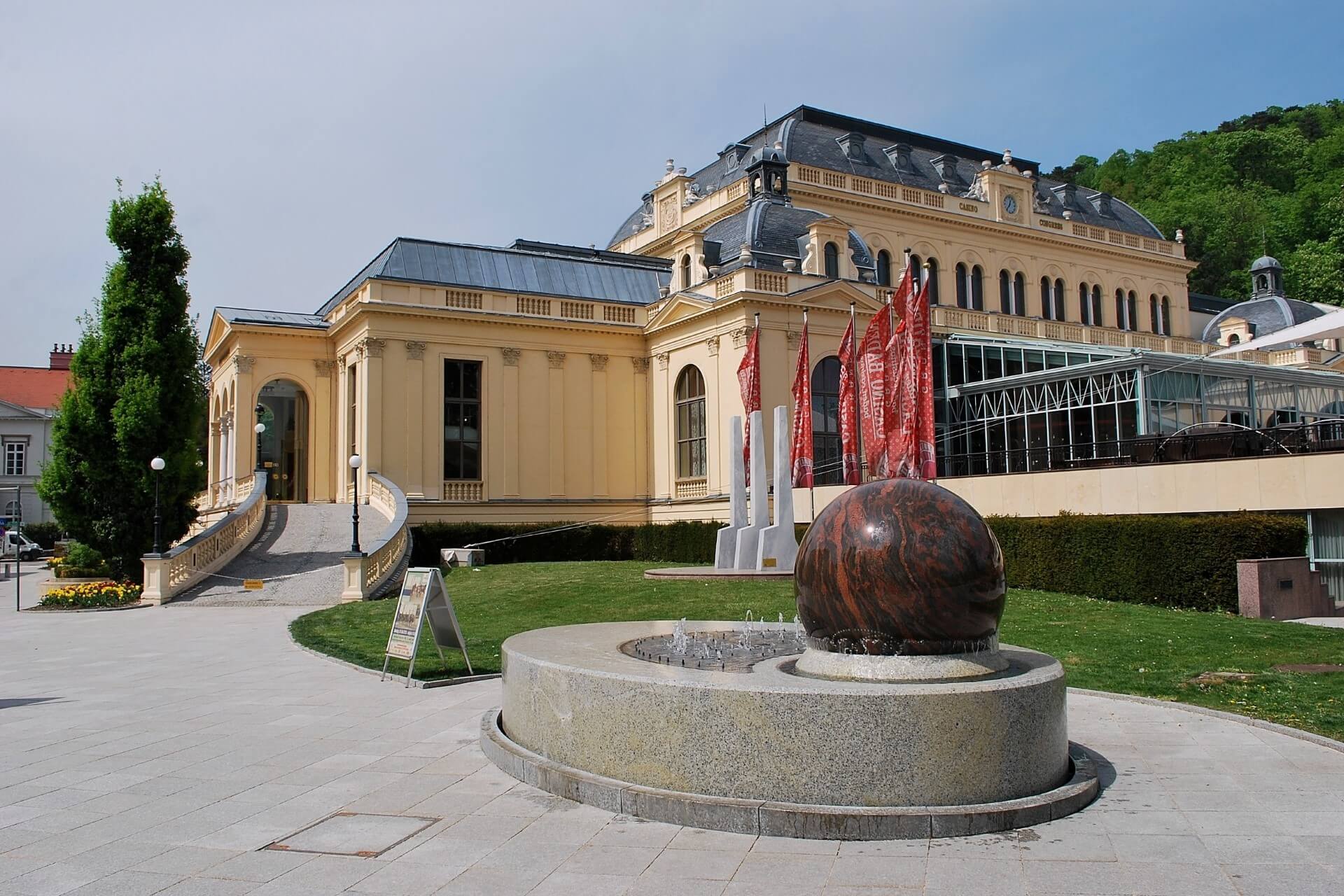
The wonderful resort town of Baden, located in the blessed corner of the Vienna Woods, can boast of its long spa history. As early as the 15th century, its thermal springs were popular among the population. In the first half of the 19th century, when Baden became the summer residence of the Austrian emperor, a stream of famous vacationers from all over Europe flowed here. The unique charm of the small resort town, living in its shady streets, in luxurious Biedermeier villas, lovely cafes, and cozy heurigers, captures you from the first steps.
Many sites are connected with the names of great composers and musicians. The city church remembers the concerts of the great Mozart, there is a Beethoven house-museum, who loved to visit Baden in summer. A memorable place is the “Sauerhof” restaurant, frequented by C. Weber. The spa park, where concerts of Strauss father and son took place, is interesting, and even today, you can hear performances by various musicians and singers here every day. Johann Strauss, working on the famous operetta “Die Fledermaus,” meant Baden as the setting.
Linz

The third most important city in the country and the capital of Upper Austria – Linz is located on the Danube bank, between Vienna and Salzburg. Its development began as a border point controlling the border with Germany (410 AD). The historical past is captured in old Baroque buildings, churches, and abbeys, cozy authentic taverns, and beer halls.
Today, the city is a highly developed cultural and tourist center with many theaters and concert halls, modern buildings in a modernist style. The main square of the city on the Danube bank is a popular place for tourists: here are the old Town Hall, the Ursuline Monastery, and the government building Landhaus. In the historic center, travelers are invariably interested in the Wilhering and St. Florian abbeys, the magnificent Cathedral of the Immaculate Conception of the Blessed Virgin Mary, which largely retains the authenticity of its decoration in the form of frescoes, beautiful stained glass windows, and wooden decorations.
You cannot pass by the monument of medieval Baroque architecture – Rosenau Castle. In the vicinity of Linz is the Holzheim Palace, first mentioned in 1075. Despite a fire (18th century) that nearly destroyed the palace, it was completely restored to its original form.
Hallstatt
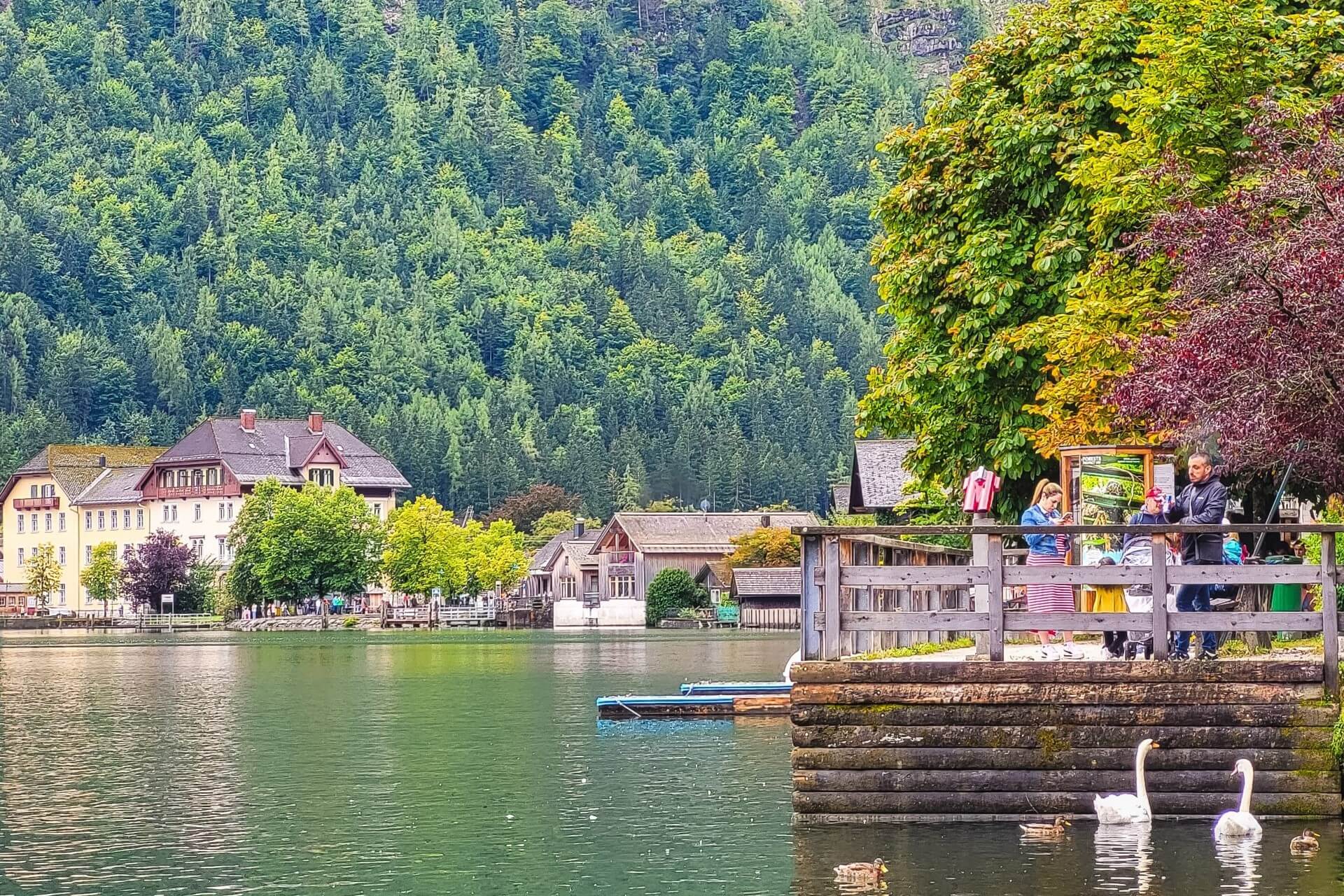
In an inaccessible corner of the Austrian Alps lies the truly unique town of Hallstatt, surrounded on one side by the eponymous lake and on the other by high cliffs. Despite such an inconvenient location, this place is considered the oldest settlement in Europe. People were attracted here by the salt deposits that have been mined for over 3000 years. During excavations in the 19th century, prehistoric burials (Iron Age) were found. As a result, the archaeological term “Hallstatt culture” (900-400 BC) appeared.
With only 1000 residents, the town cannot grow due to a severe lack of land. For this reason, there is an unusual sight – the Charnel House – a repository of human bones and skulls. According to an old tradition, people are buried in the ground, and after 10 years, their bones are exhumed, cleaned, bleached, the skulls decorated with paintings, their data indicated, and placed in a crypt where relatives and tourists come.
The stunning beauty of the surrounding landscapes, beautiful pedestrian streets, and wonderful buildings look simply fabulous. Transport routes are laid in tunnels carved in the cliffs. You can leave your cars in such underground parking lots. A trip to this fantastic place will leave you with many unforgettable impressions.
Graz

The city, where the brilliant past of the Habsburg era and successful modernity are combined, Graz has in its architectural appearance features of the Renaissance, Baroque, and modern styles. Largely provincial but not devoid of metropolitan gloss and splendor, the main city of Styria is always happy to show guests many amazing historical and cultural monuments. On the central Hauptplatz square, the luxurious Town Hall building, the Franciscan Church, the Clock Tower with an old bell and an amazing clock mechanism attract attention.
The Kunsthaus Art Museum (2003), located in a futuristic building of interesting design, holds temporary exhibitions. The Jesuit Church of St. Egidius, impressing with the luxury of its interior, makes a great impression. The true masterpiece of Italian Renaissance – the 16th-century house with a courtyard surrounded by arcades, Landhaus (concerts and performances are held against its backdrop). The Baroque-style pearl – Attem Palace and other architectural structures of the past are the priceless heritage of Graz.
Salzburg
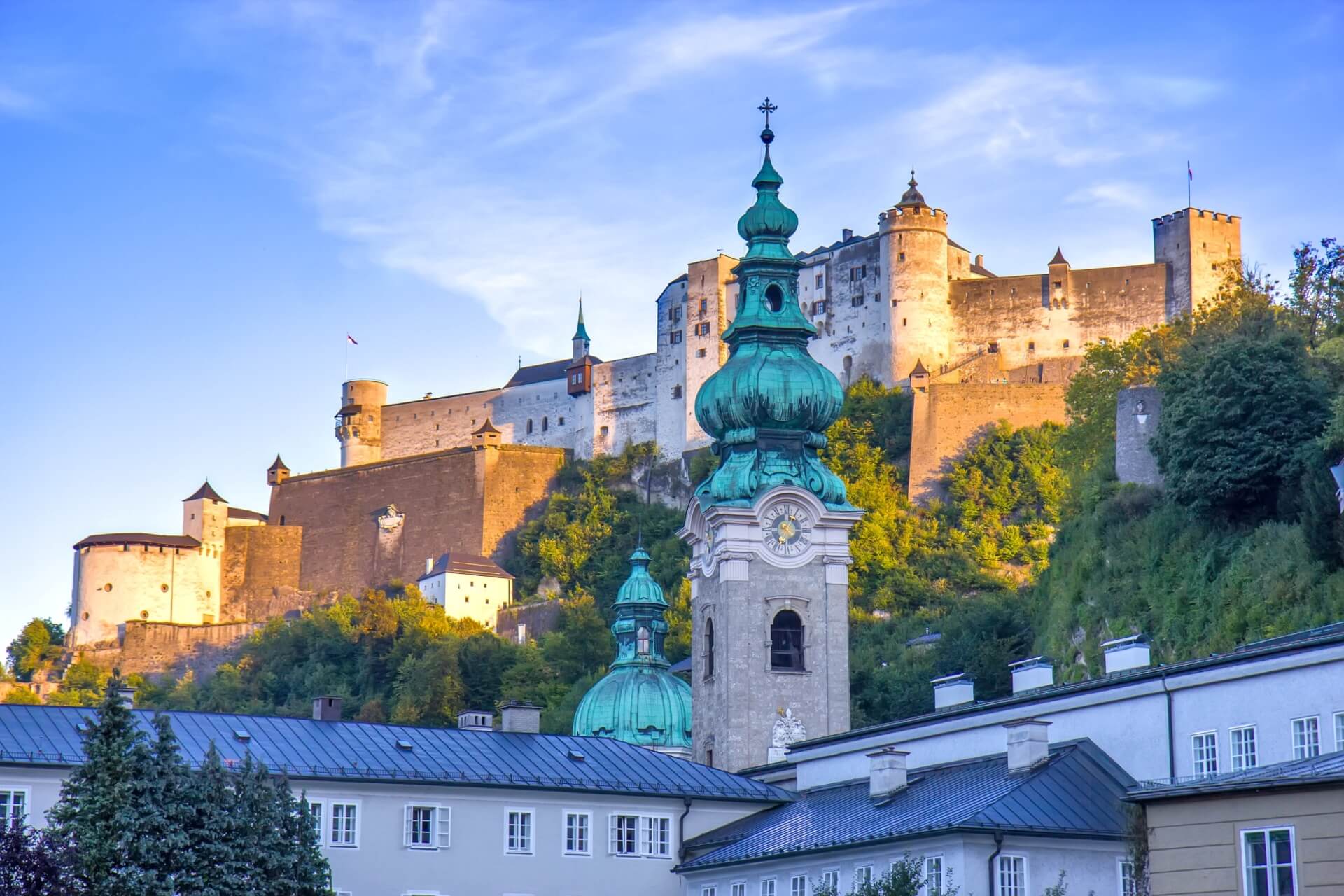
The city glorified by the genius Mozart cannot help but stir the imagination. The beauty of its squares and parks, magnificent palaces, and museums impresses and captivates, making you think that such a music creator as Mozart could only be born here. Salzburg (Old Town) is among the outstanding cultural heritage sites globally and is listed by UNESCO as the best city on the planet. The Old Town – the historical center, where each building is a sample of one architectural direction, a monument of a certain epoch, is particularly charming.
The Gothic-style Cathedral of St. Rupert, where Mozart was baptized, the medieval St. Peter’s Monastery are especially charming. The Archbishop’s Residences (Old and New), the Franciscan Church impress with their views. You cannot pass by the famous house where W. A. Mozart was born. Salzburg amazes with its beauty and diversity of architectural styles.
Budapest
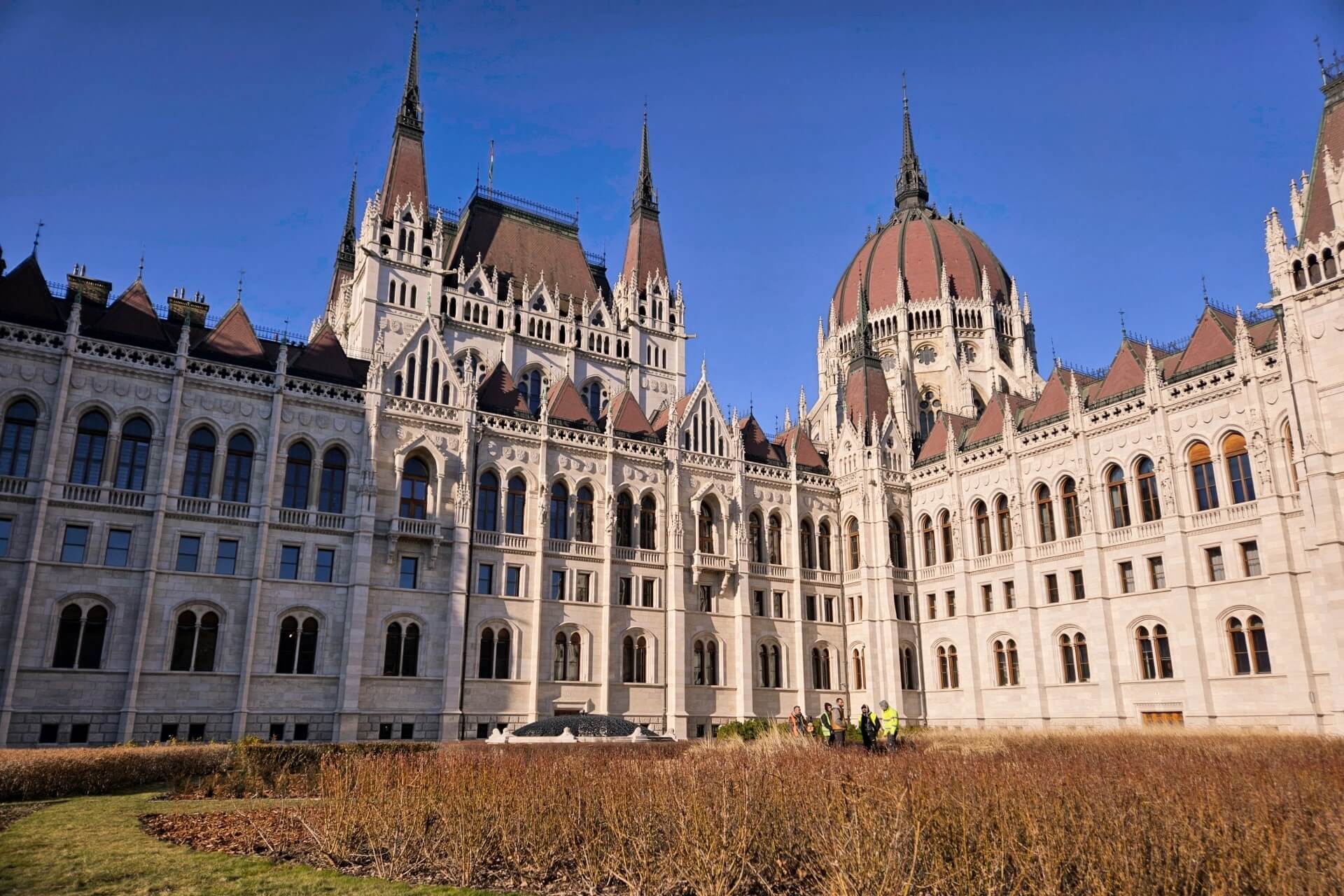
The most beautiful European city, Budapest, is deservedly considered the “Pearl of the Danube.” Its location on both sides of the river makes the Hungarian capital unique, an incomparable beauty.
The picturesque embankments of Buda and Pest are favorite places for residents and tourists to walk, and the magnificent bridge across the Danube fits perfectly into the urban landscape. The rich history of development has left behind amazing architectural monuments that captivate with their ancient charm.
The “heart” of Budapest – Heroes’ Square – is a concentration of sculptural monuments that capture the glorious events and great figures of the state. Two colonnades dedicated to Hungarian heroes house majestic statues of the princes of Hungary from three ruling dynasties. In the center stands a majestic column topped with a sculpture of the Archangel Gabriel, and at the base are allegorical statues of virtues.
The square is surrounded by many amazing architectural structures in Gothic, Baroque, and Renaissance styles: Vajdahunyad Castle, Széchenyi Thermal Baths, Műcsarnok Art Gallery, the Millennium Monument, the Museum of Fine Arts, and more.
Brno
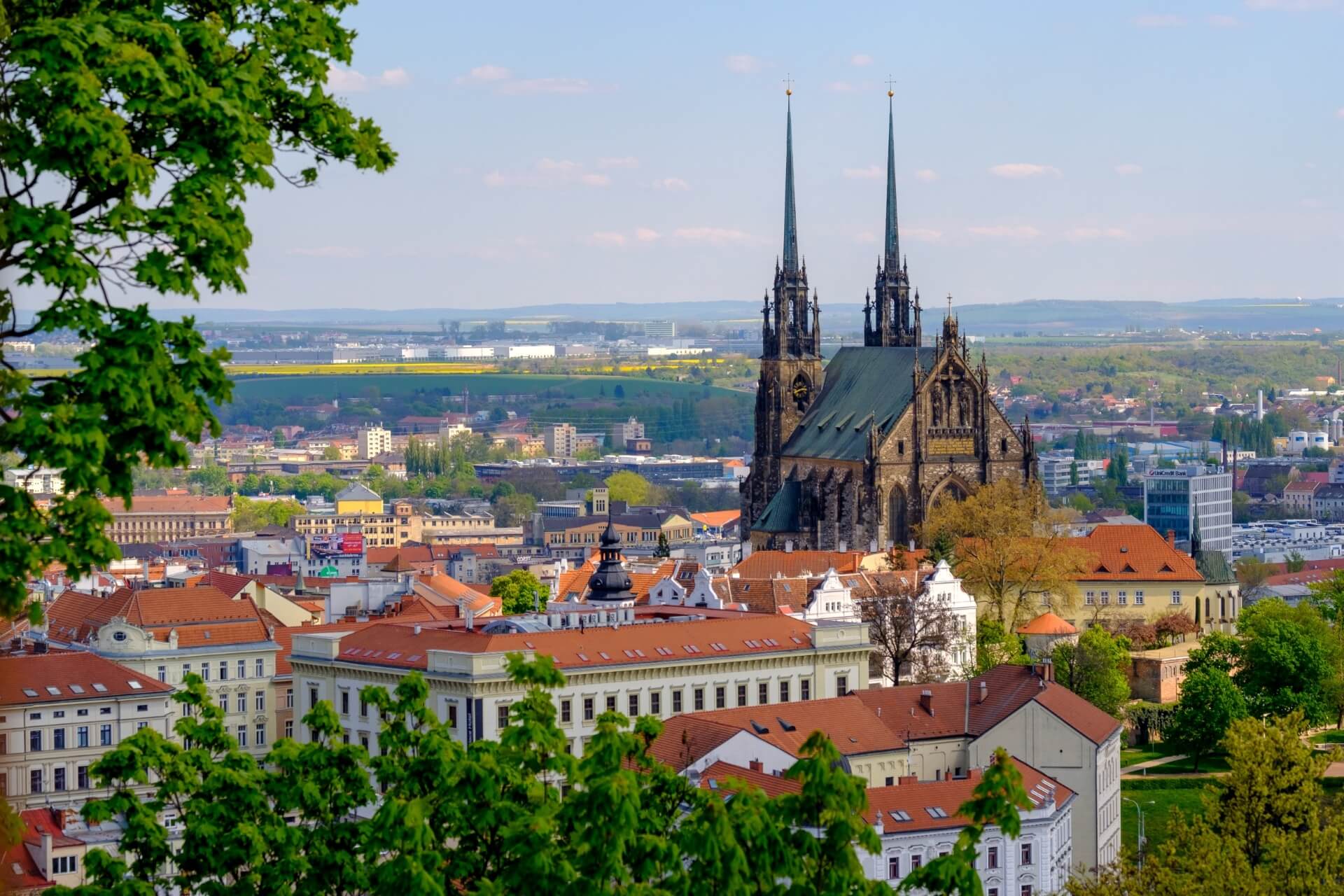
On the beautiful Moravian plain, near the confluence of the Svitava and Svratka rivers, lies the picturesque city of Brno, famous for hosting international industrial fairs. Brno was chosen as the site for these fairs not by chance – today, it is a major highly developed industrial center in Europe. Alongside this, Brno prides itself on its ancient history and culture, as well as its unique monuments.
The pride of Brno’s residents is the Dominican Church of St. Michael – a Baroque-style religious structure (17th century). The church is surrounded by statues of saints, each a genuine work of art. Another significant medieval monument is the fortress castle Špilberk, located on the hill of the same name. As one of Brno’s important symbols, it is depicted on Czech coins.
Two Gothic chapels stand close to the castle. You must visit the Capuchin Monastery, with the remains of monks preserved there due to a special ventilation system. Everyone should visit the Observatory named after the famous N. Copernicus, whose planetarium is equipped with a powerful telescope.

